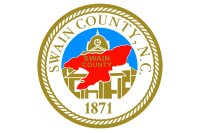The oil nut’s curious little green fruits
For me, the fall season is one of the most invigorating times to get out in the woods and prowl around. Many of the most beautiful wildflowers found in the Blue Ridge, especially the lobelias and gentians, are then coming into their own.
Finding the forest less logged
For three years, Josh Kelly has been stalking forests in the Southern Appalachians in search of unmapped old-growth forests and very old trees.
“It is like a treasure hunt everyday when I go out and look for these places,” Kelly said.
Hepatica — a thing of beauty and lore
Nothing is fairer, if as fair, as the first flower, the hepatica. I find I have never admired this little firstling half enough. When at the maturity of its charms, it is certainly the gem of the woods. What an individuality it has! No two clusters alike; all shades and sizes. A solitary blue-purple one fully expanded and rising over the brown leaves or the green moss, its cluster of minute anthers showing like a group of pale stars on its little firmament, is enough to arrest and hold the dullest eye.
— 19th century naturalist John Burroughs
Hepatica doesn’t display the earliest flowers that bloom each year. Those of bitter cress, henbit, purple dead nettle, bird’s-eye speedwell, and others appear in open moist sunny spots by late January or early February.
The doghobble’s claim to fame
Whenever I’m conducting a native plant identification workshop, I try to note several regional plants — one each in the fern, shrub, and tree categories that participants might utilize effectively in an ornamental setting. I usually recommend cinnamon fern (Osmunda cinnamomea). Among small trees, the sweet pepperbush (Clethra acuminata) is my favorite. In the ornamental shrub category, the highland doghobble (Leucothoe fontanesiana) is certainly attractive and manageable. It has evocative associations with regards to both its common and scientific names.
A locust by any other name
I’m fairly good at the identification of deciduous trees during the flowering and fruiting seasons, when one can observe bark, leaves, general growth habit, and flowers or fruit. I’m less adept during the winter months, when one can observe just bark, buds, and general growth habit.









